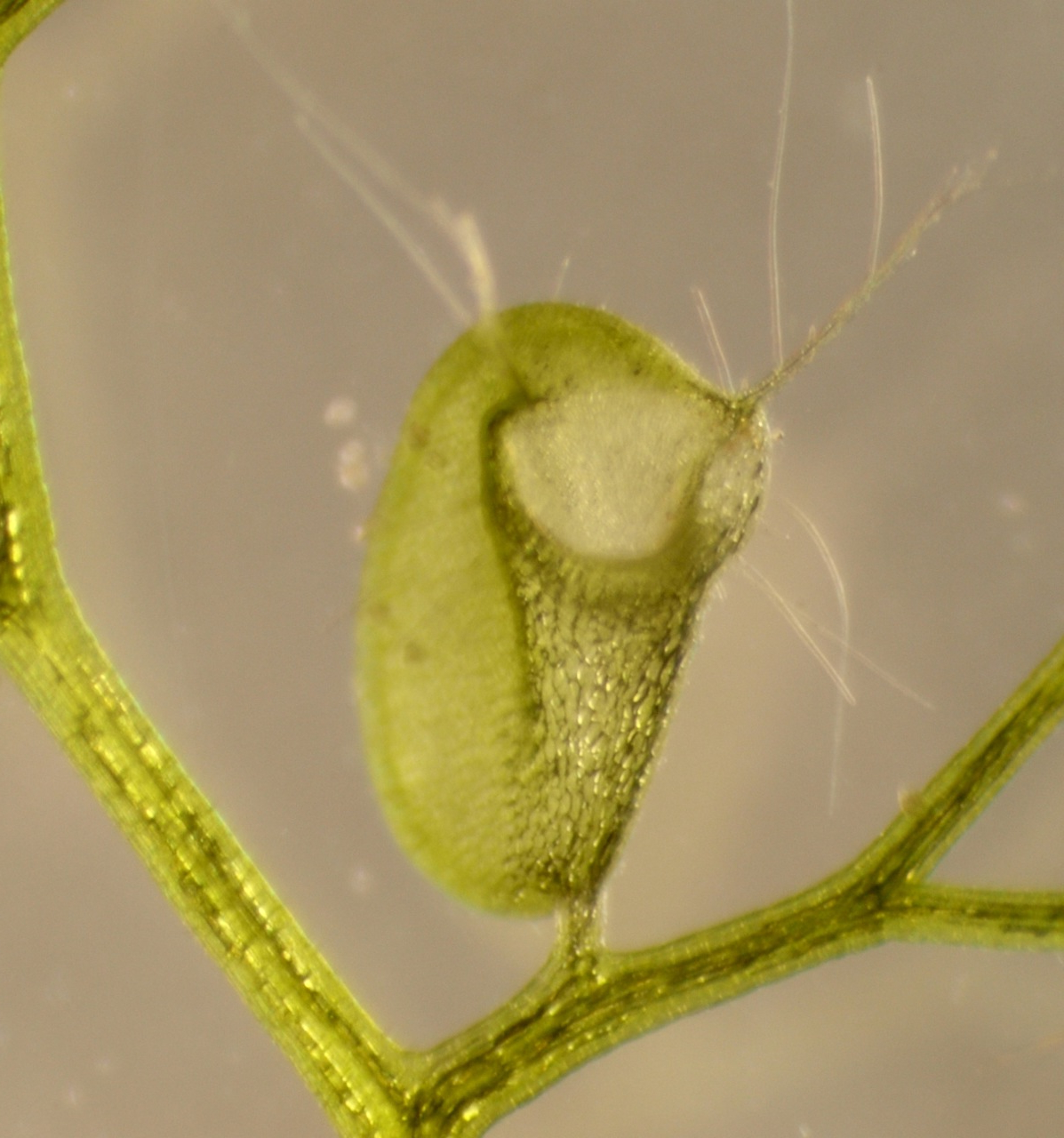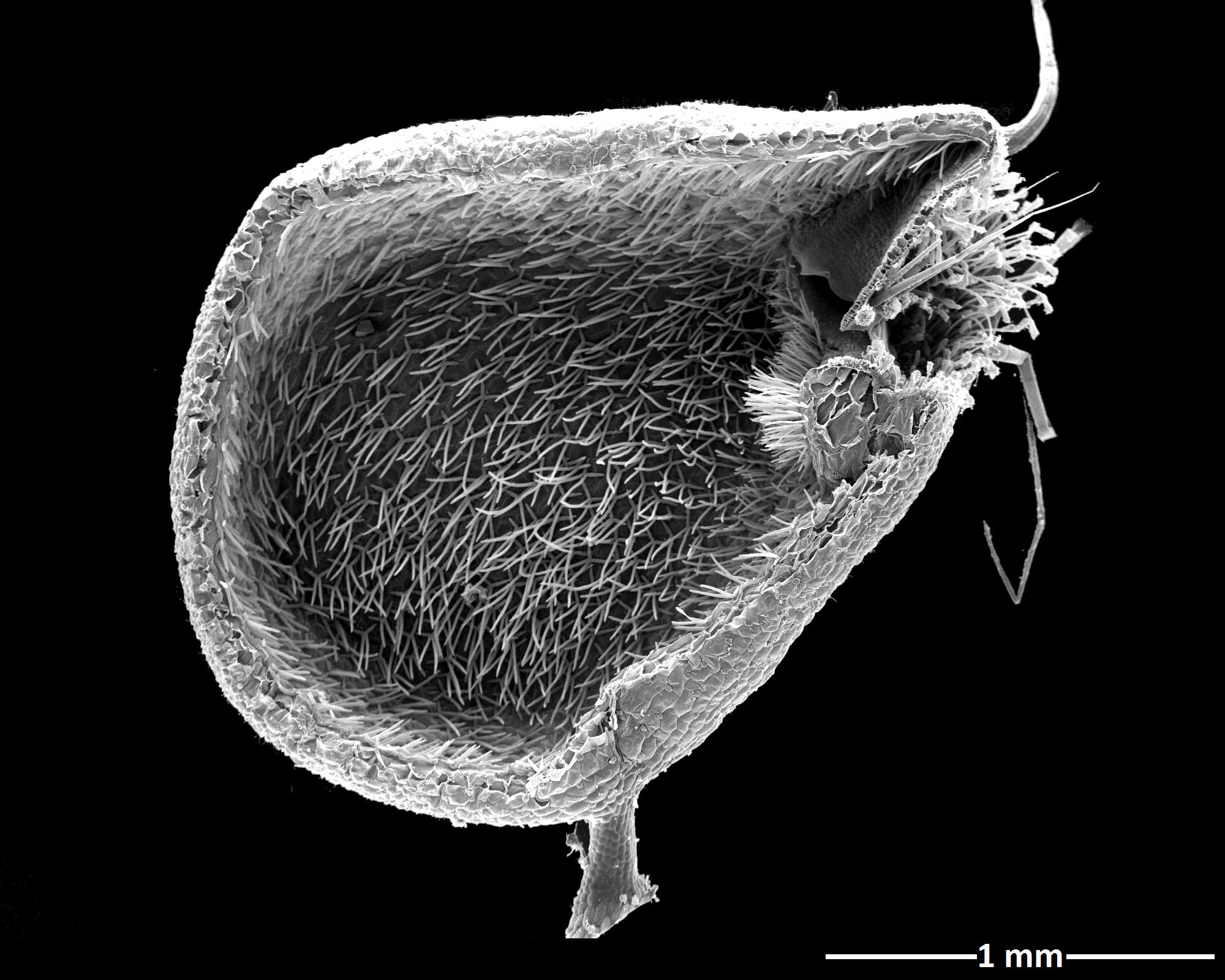Carnivorous Plant Snaps Shut With 600 Gs

A carnivorous plant that lives in bogs worldwide traps its prey in less than a millisecond, more than 100 times faster than a Venus flytrap can manage, a new study finds. The study is the first to capture a high-speed recording of the plant's traps snapping shut.
Utricularia, a genus of rootless carnivorous plants, is better known by its common name, bladderwort. There are more than 200 species worldwide, living in fresh water and saturated soils. To survive without roots, bladderworts trap and digest tiny organisms, including protozoa and tiny crustaceans. They do so with small bladder-like traps that line their stems.
The super-fast motion of bladderwort traps (which are a few millimeters in size) is too quick to be seen with the naked eye. So Philippe Marmottant of the Universite Grenoble in France and his colleagues made high-speed recordings of bladderworts snapping up crustaceans just a few millimeters long.
"We wanted to know how fast the trap was," Marmottant told LiveScience. "There were several estimations, but no certitude, because high-speed recordings were not available."
Expert trappers
The cameras recorded up to 10,000 frames per second, enough to give the researchers enough resolution to slow the film down and analyze how the bladderworts trap their prey. The traps closed more quickly than the traps on any other carnivorous plant, the researchers reported Feb. 15 in the journal Proceedings of the Royal Society B. On average, the traps snapped shut in about half a millisecond. In comparison, Marmottant said, the Venus flytrap reacts to its prey in 100 milliseconds.
"Because the suction is so fast, with accelerations of up to 600 G [600 times the force of gravity], it is very difficult for any living animal to escape such a trap," Marmottant said. (For comparison, an astronaut feels about3.5 Gs during a space-shuttle liftoff; and a mere 8 Gs will cause most people to black out.)
Get the world’s most fascinating discoveries delivered straight to your inbox.
The tiny traps generate all this energy by spring-loading themselves. First, glands in the traps pump out water. That means the air inside of the traps is at a much lower pressure than the surrounding water. The door of the trap bulges out, much like the shape of a contact lens. When prey triggers tiny hairs on the outside of the door, the trap leaves begin to collapse inward, crumpling until – bam! – the door opens and water and prey rush in.
If nothing triggers the traps, Marmottant said, they start spontaneously firing after a few hours. The spontaneous firing may bring in phytoplankton or other microscopic plants that wouldn't otherwise become a bladderwort meal.
"Such plants give extra food to the trap, that is thus vegetarian, or omnivorous if you like," Marmottant said.
Mimicking the bladderwort
Humans might be able to learn a thing or two from bladderworts, Marmottant said.
"The door movement is ultra-fast and forcible, but at the same time highly precise, repeatable and fail-safe," he said. "It might give inspiration for new deployable materials."
That could be a pipette-like device useful for deploying tiny bits of fluid, Marmottant said. Such a device could be helpful in the laboratory and in everyday devices such as ink jet printers, which produce tiny ink droplets, he said.
You can follow LiveScience Senior Writer Stephanie Pappas on Twitter @sipappas.

Stephanie Pappas is a contributing writer for Live Science, covering topics ranging from geoscience to archaeology to the human brain and behavior. She was previously a senior writer for Live Science but is now a freelancer based in Denver, Colorado, and regularly contributes to Scientific American and The Monitor, the monthly magazine of the American Psychological Association. Stephanie received a bachelor's degree in psychology from the University of South Carolina and a graduate certificate in science communication from the University of California, Santa Cruz.



